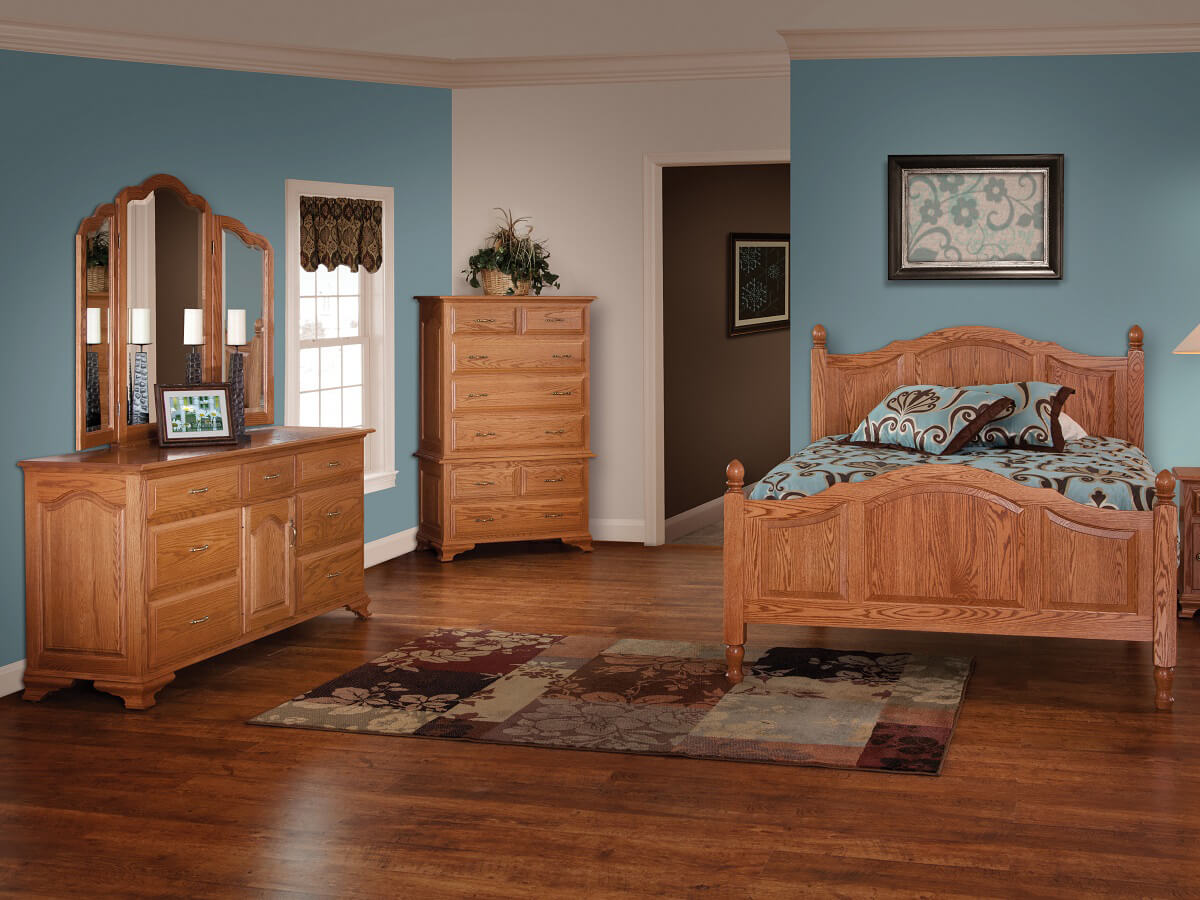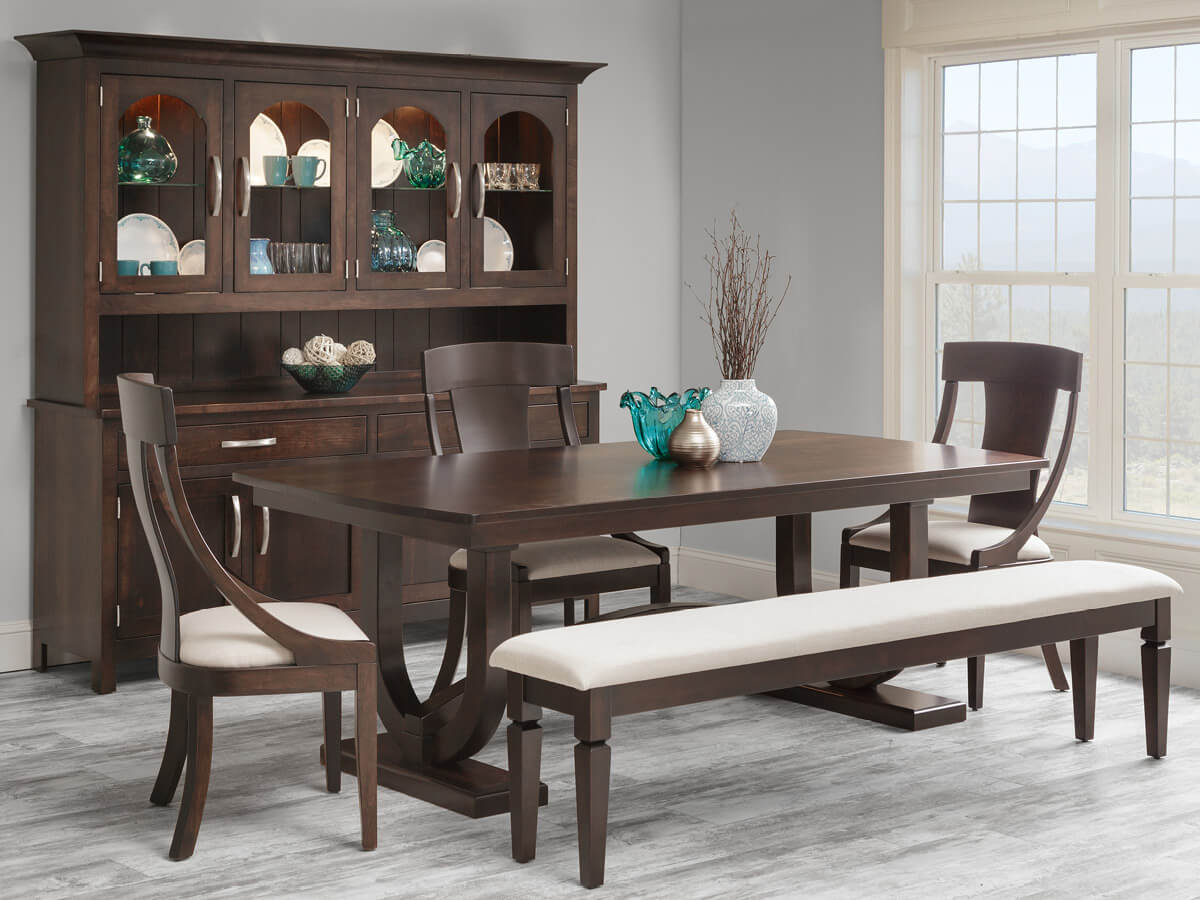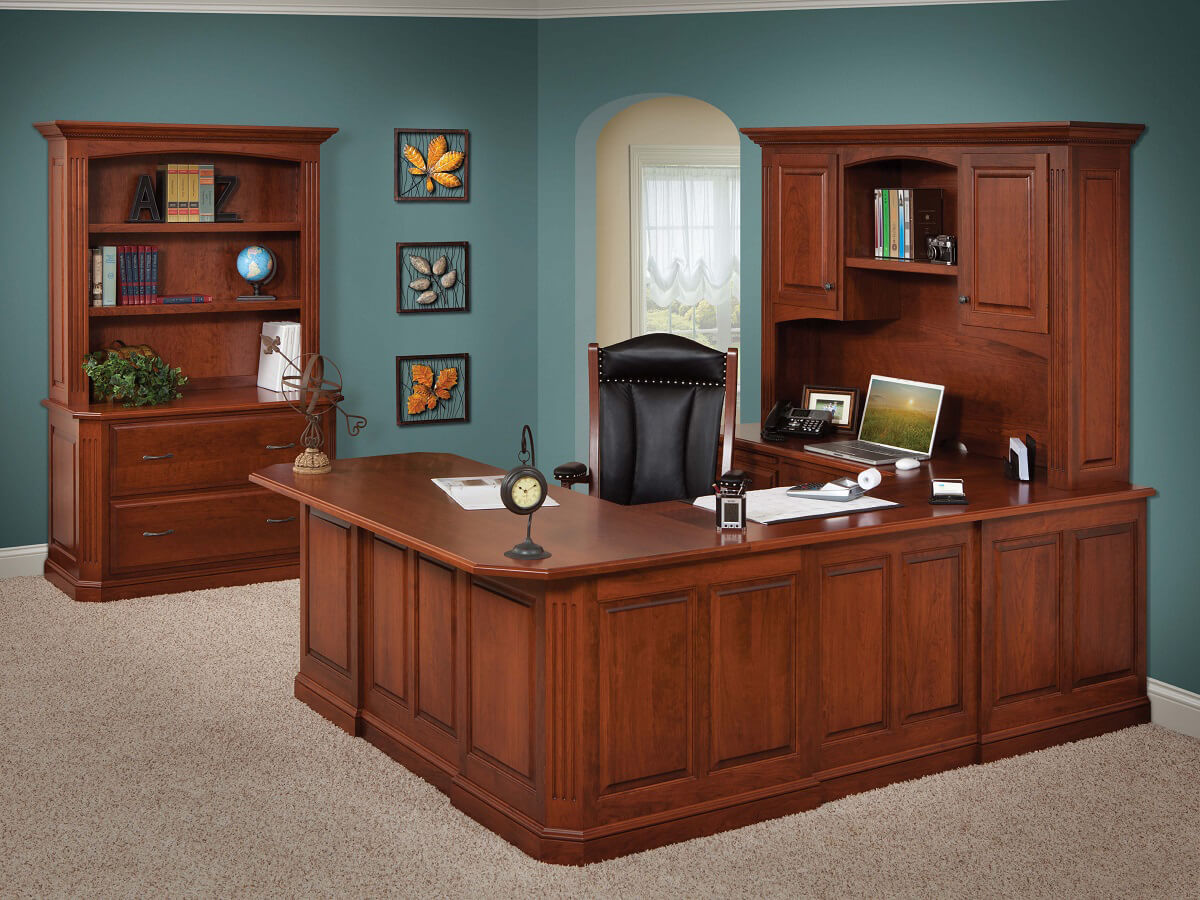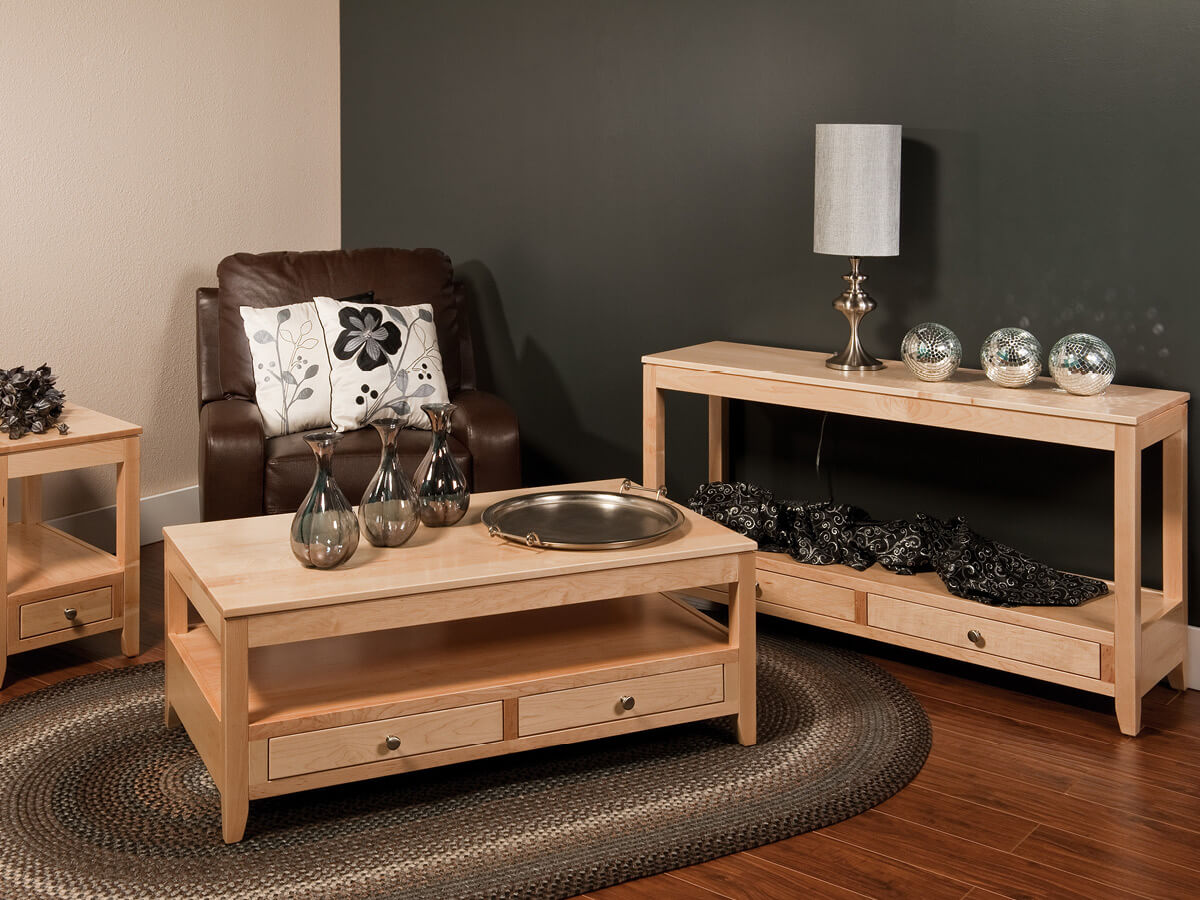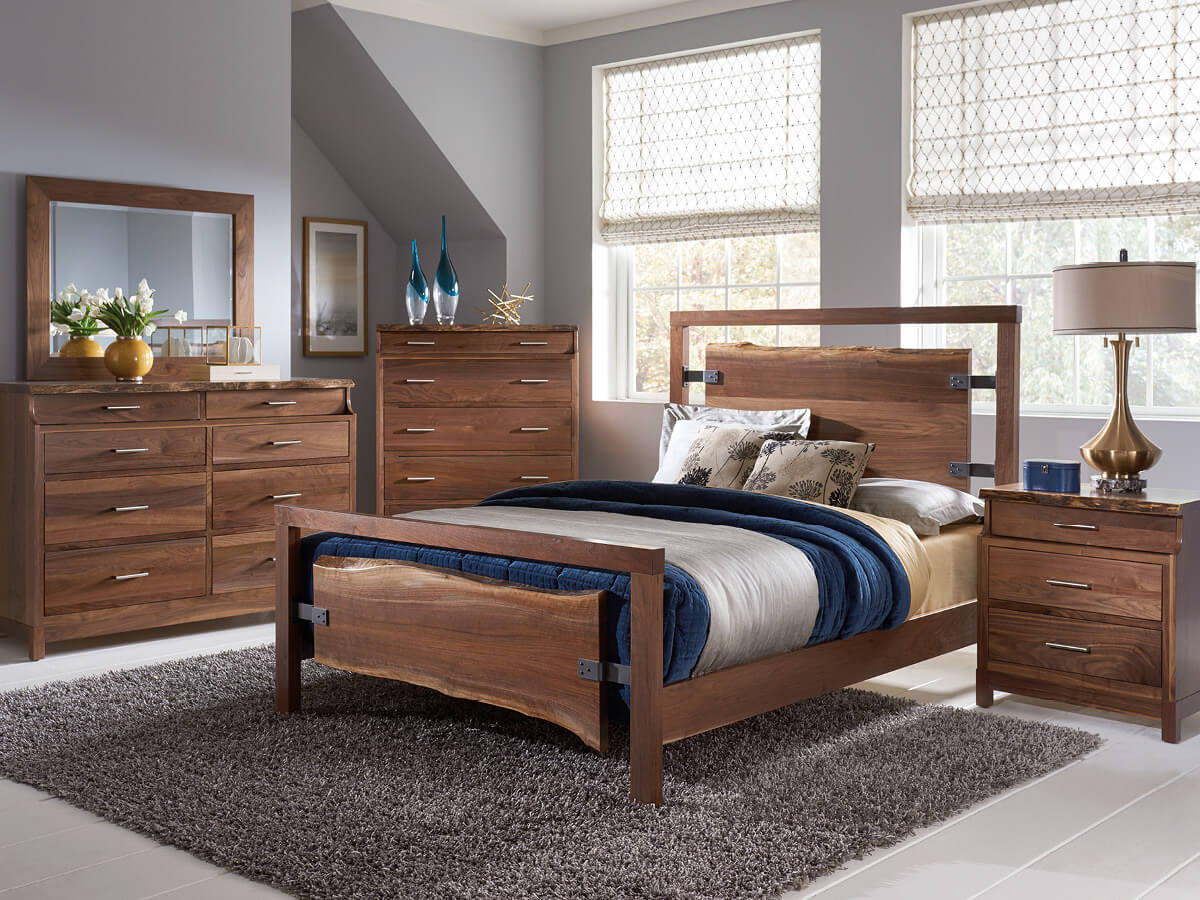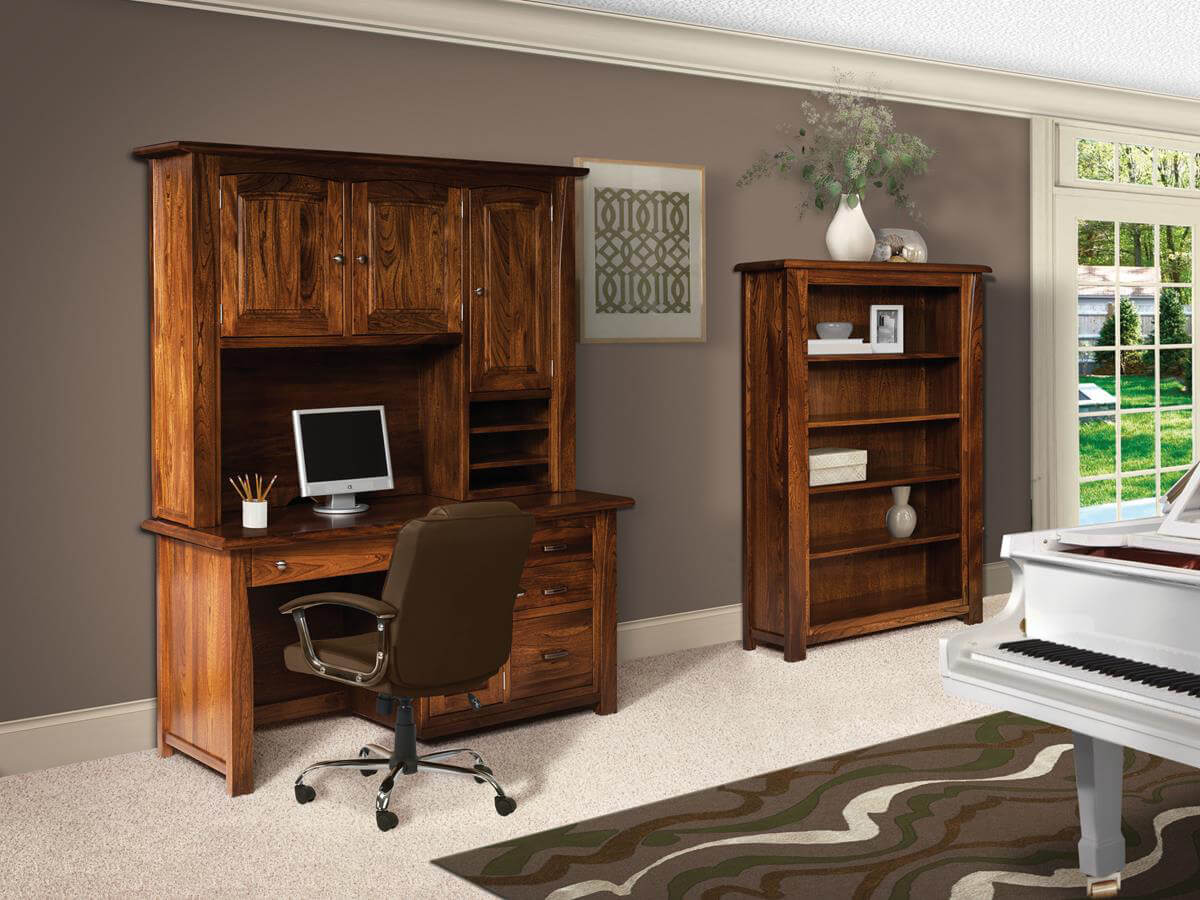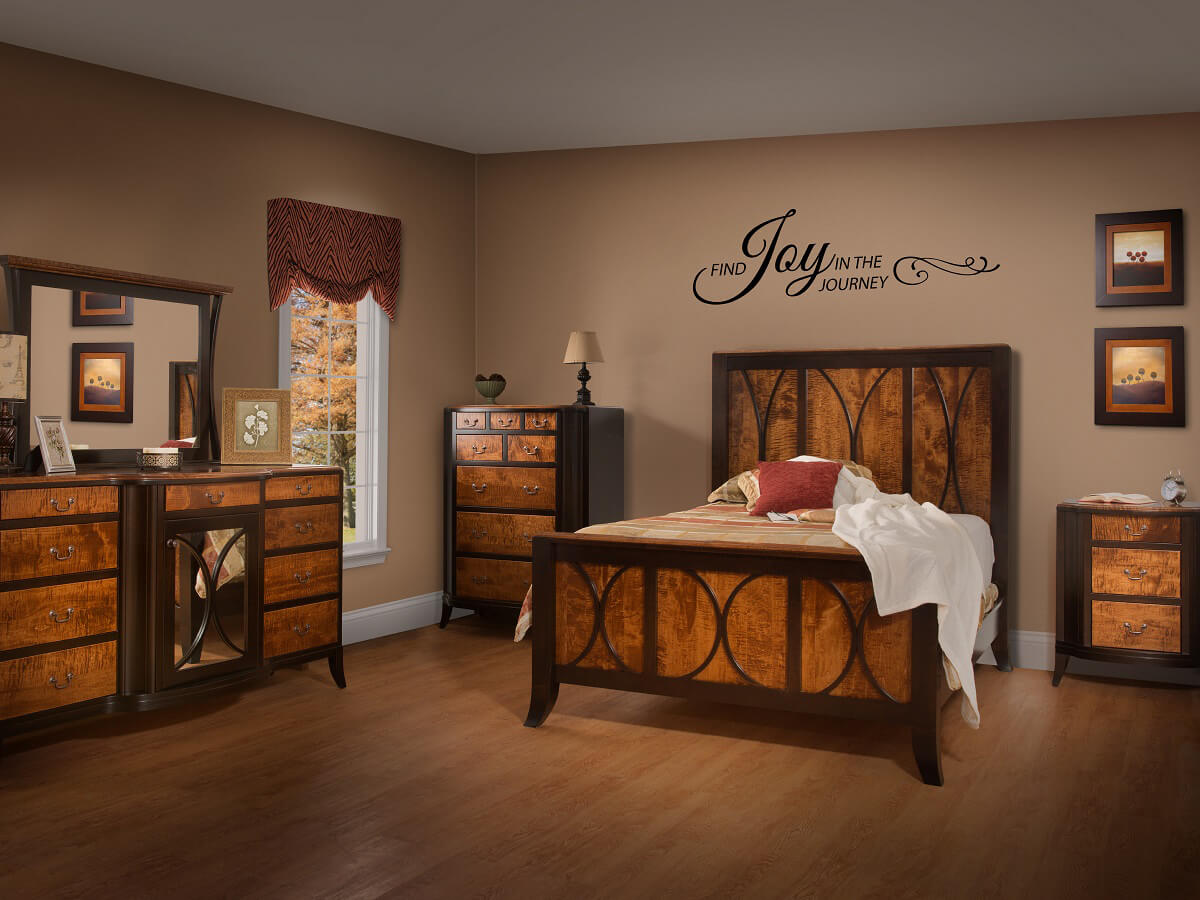Understanding Solid Wood Species and The Janka Hardwood Rating System
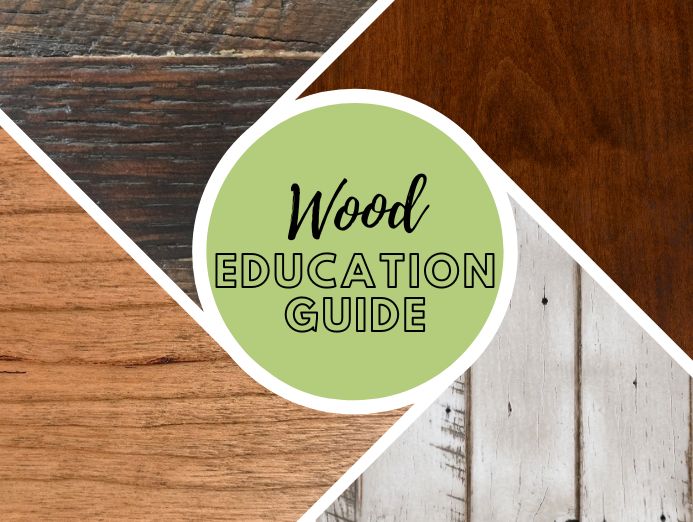
Solid wood is an apt choice for furniture for many reasons: it’s beautiful, classic, and incredibly sturdy. For this reason, it’s the prime choice for Amish furniture makers! However, simply deciding to buy solid wood pieces may not be enough—knowing the specific wood species can help you make informed purchasing decisions and coordinate the furniture with the rest of your home.
The Countryside Amish Furniture team put together this helpful guide to help distinguish what to look for when assessing your various wood options, as well as what characteristics differentiate one species from another.
Criteria for Choosing Solid Wood for Amish Furniture
The Janka Hardwood Rating System
The Janka Hardness Test measures wood's hardness by pressing a steel ball into it and observing the force required to create a dent. The higher the number, the harder the wood. This test helps people determine how durable a type of wood is and whether it's good for things like furniture or floors.
So why does this matter? Your furniture goes through a lot, whether it’s the slamming of cabinet doors, the shifting of bed frames, or chairs supporting your weight for hours on end. Harder wood can withstand such strains, while softer variations (like pine or plywood) will inevitably succumb.
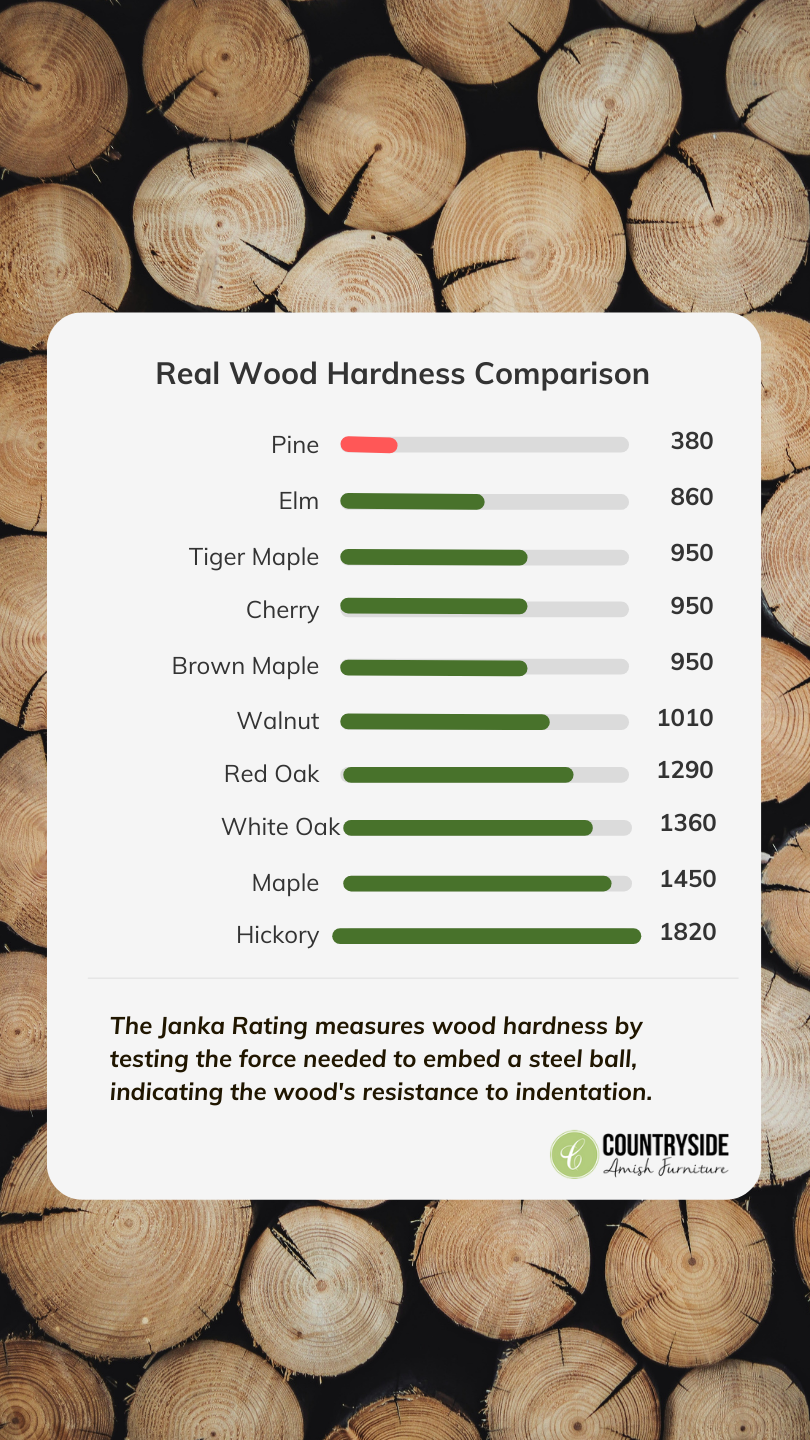
Sustainably Sourced North American Lumber
As a natural resource, it is the responsibility of consumers to consider whether the wood is harvested responsibly in a way that can actually benefit ecosystems or whether it jeopardizes the environment. Be mindful of:
- Whether wood is harvested from renewable forests - Wood is ideally sourced from forests that are managed sustainably in which trees are replanted or naturally regenerated at a rate that equals or exceeds the rate of harvest. This ensures the long-term health and viability of the forest ecosystem.
- Wood should be locally sourced to reduce carbon emissions and compress the supply chain - Obtaining wood from nearby forests reduces transportation distances, reducing fuel usage and associated carbon emissions. It also supports local economies and reduces the environmental impact of long-distance transportation. To learn more, read Buying Solid Wood Furniture Made in the USA - Why it Matters.
- Not harvested from illegal forests - Ensuring that wood is sourced from legal and responsibly managed forests helps prevent deforestation, habitat destruction, and other negative environmental impacts of illegal logging. This promotes ethical furniture practices and helps conserve biodiversity.
How it Stains and Compares to Other Wood in Your Home
Understanding how different wood species respond to various stains is crucial when selecting both the timber and the finishes. After all, each species has its unique grain patterns and natural hues, affecting how it absorbs and reacts to added colors. Our tip? Before finalizing your furniture purchase, always acquire samples of different stains on your chosen wood to take home and assess within your house. Hold the sample up against other furniture and view it in different lights.
Mixing wood species can enhance your living space, adding depth and character. However, this should be approached thoughtfully. To Mix or Match? A Guide to Choosing Wood Stains That Go Together provides insights into harmonizing various tones and grains for a cohesive space.
Common Wood Species
Red Oak
Renowned for its robustness and always-on-trend look, Red Oak (commonly called just “oak”) is one of the most sought-after hardwoods in the United States. Its dense nature and remarkable durability render it a staple choice in crafting cabinetry, furniture, flooring, trim, and doors. Oak's distinct grain, reminiscent of both rugged peaks and elegant straight lines, is accentuated by its sizable, inviting pores. Remarkably versatile, Oak readily embraces a spectrum of stains, gracefully adapting to both natural and highly colorful variations. Beyond its aesthetic appeal, Oak boasts formidable resilience, making it an ideal selection for enduring pieces like kitchen tables and dining chairs. While Oak may gradually deepen in hue over time, this transformation unfolds with subtle grace, further enhancing its timeless allure.
Brown Maple
Brown Maple showcases an intriguing medley of hues, from rich browns to subtle grays, tans, whites, and creams, each streak contributing to its iconic essence. Opting for a light stain may obscure these nuanced tones, hence it's generally advised against. Brown Maple truly comes into its own with medium to dark stains, as well as paint. Imagine crafting your contemporary dining set from Brown Maple, adorned with a sleek painted finish or enriched with deep tones like Vintage Black or Venezuelan Chocolate, elevating its modern aesthetic. Remarkably versatile, this hardwood possesses the remarkable ability to mimic the appearance of pricier woods such as Walnut or Cherry when expertly finished, offering a sophisticated allure without compromising on quality or style.
Cherry
Cherry wood presents a luxurious fine texture and tight grain, distinguishing it as one of the foremost hardwoods in the United States. Renowned for its application in exquisite furniture and intricate trim work, Cherry embodies elegance and solidity. Its velvety smooth surface, coupled with a distinctive circular grain pattern, lends itself beautifully to crafting your furniture ensemble. As a moderately hard species, Cherry exhibits robustness and excellent wear resistance, ensuring longevity for your cherished pieces.
Upon completion, your furniture will exude a warm, uniform finish, enhancing the ambiance of any space. It's worth noting that Cherry undergoes a delightful transformation over time, developing a reddish-brown patina as it ages, adding depth and spirit to your furnishings with exposure to light and heat. Leveraging its strength, visual allure, and resistance to warping, Cherry finds its place in crafting bedroom, living room, and office furniture of pristine craftsmanship and timeless charm.
Quartersawn White Oak
Quartersawn White Oak stands out as one of the toughest domestic wood varieties, obtained by slicing the wood perpendicular to the tree's growth rings, thus unveiling stunning ray-fleck patterns. Characterized by its tight grain and striking interplay of light and dark tones, Quartersawn White Oak emanates pure elegance. This wood species possesses a remarkable ability to absorb stains with richness and uniformity, accentuating its inherent beauty.
Much of the revered heirloom furniture adorning homes today is fashioned from Quartersawn White Oak, a testament to its enduring appeal and exceptional quality. Opting to have your kitchen table meticulously handcrafted from this esteemed wood ensures a piece that transcends generations, blending exquisite craftsmanship with functionality for years to come.
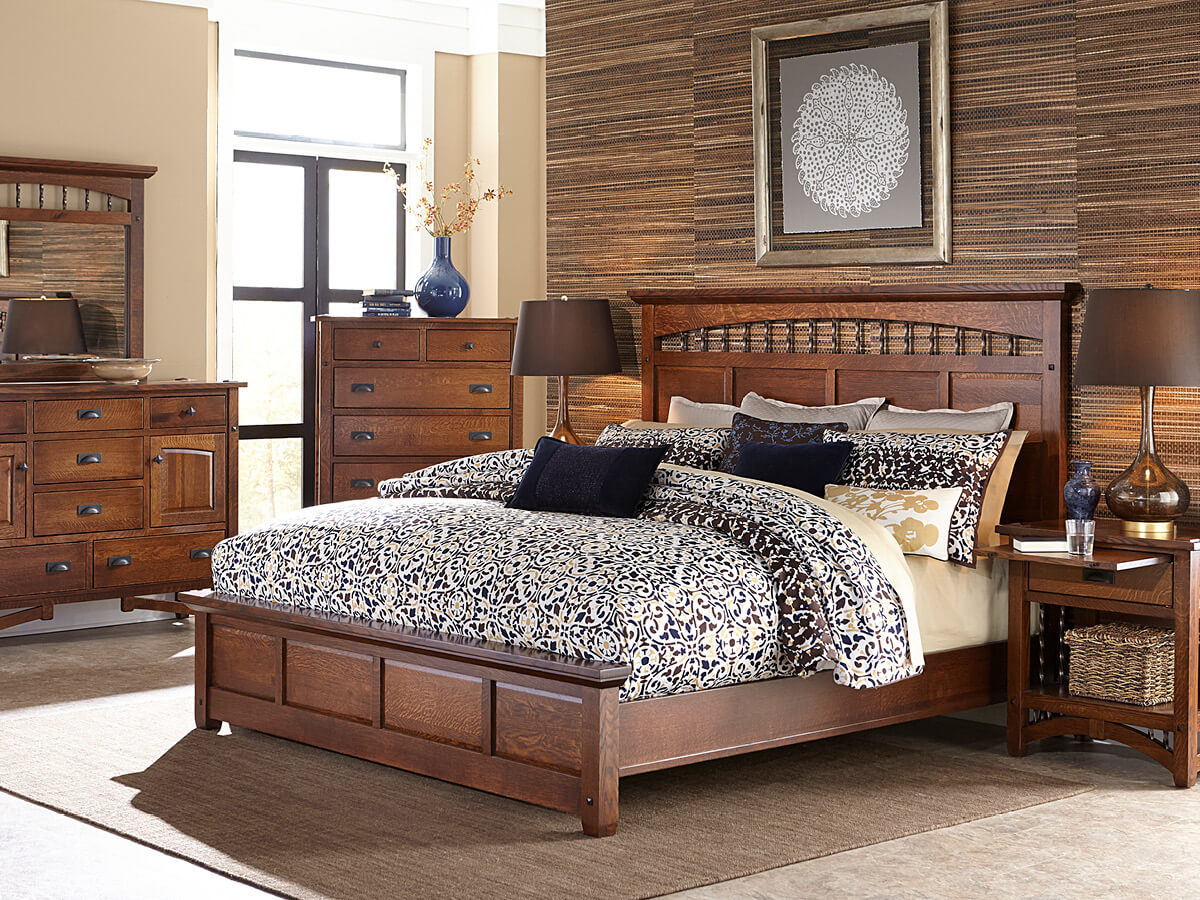
Maple
Maple stands tall as one of the toughest domestic hardwoods in the United States while also showcasing a tight, circular grain pattern and a refined texture. This beloved species is best suited for light to medium stain colors, as they accentuate its natural beauty with boldness and clarity.
Recognized for its durability, density, and inherent integrity, Maple emerges as a popular choice for both cabinets and furniture, promising longevity and reliability. Elevate the allure of Maple's distinct grain pattern by opting for our Au Natural or Sanibel stain options, inviting a harmonious fusion of natural elegance and understated sophistication into your space.
Hickory
Hickory, esteemed for its striking contrast between red and cream grain patterns, stands as a pinnacle of strength among our wood offerings. Widely celebrated as one of the most robust, dense, and resilient hardwoods native to North America, Hickory embodies unparalleled sturdiness. Furniture fabricated from this exceptional wood species exudes a rustic charm, accentuated by its pronounced color variations and dramatic interplay of light and dark grain patterns. Its remarkable hardness, weight, and resistance to shock make it a formidable choice for high-end pieces designed to withstand the test of time. Hickory trees, a testament to nature's fortitude, dot the landscape of the eastern United States, further underscoring the legacy of this magnificent hardwood.
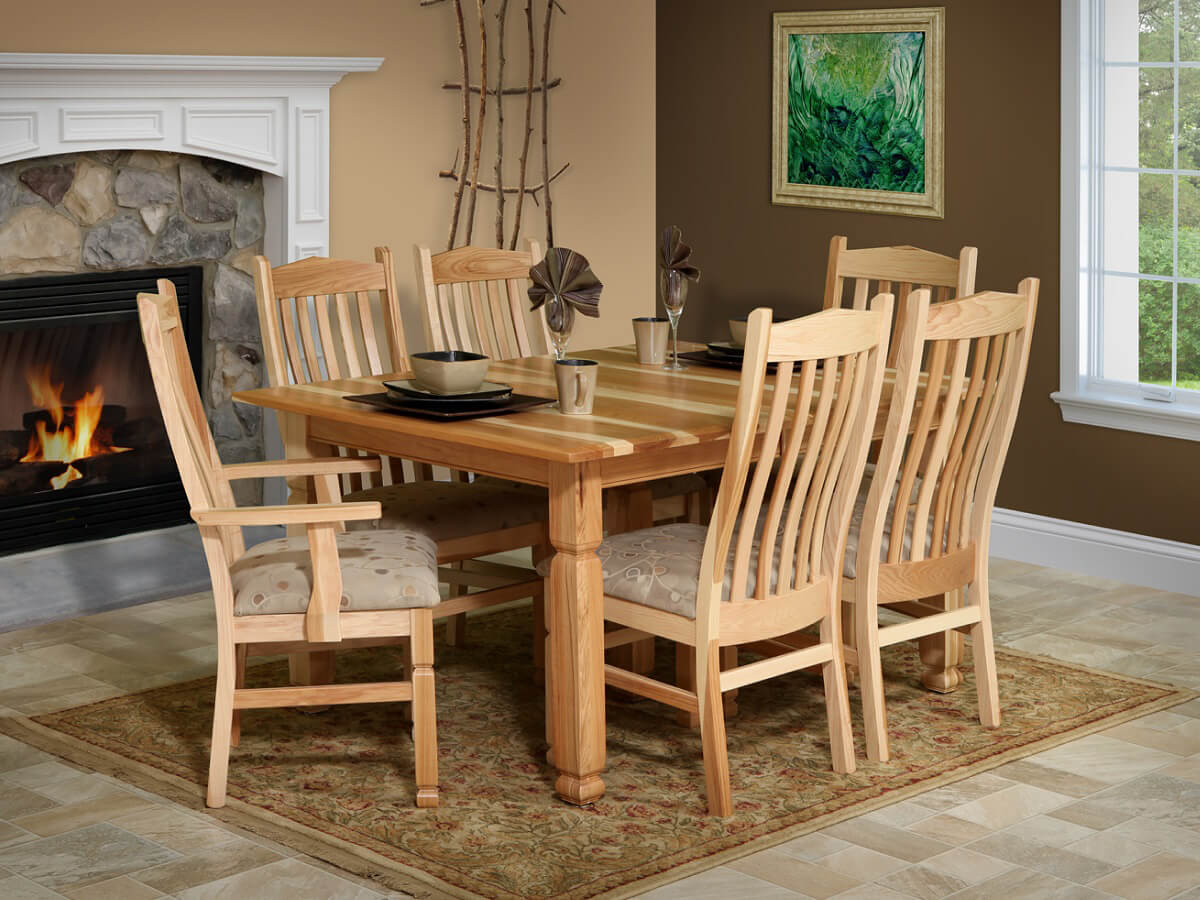
Walnut
Walnut, with its naturally opulent brown hue, commands admiration among discerning furniture and cabinetry artisans. Boasting a grain that often runs fairly straight, reminiscent of the elegant Cherry, Walnut exudes classic sophistication. Its inherent color variation lends an enchanting allure, elevating the desirability of this beloved domestic wood species. Delivering exceptional hardness, strength, stability, and resistance to shocks, Walnut emerges as a stalwart choice for enduring creations. Notably heavy and uncompromisingly durable, it embodies longevity and reliability in every piece crafted. However, its premium quality comes at a cost, as Walnut trees mature slowly, making this wood one of the more luxurious options available. Across the vast expanse of the eastern and central United States, the majestic Black Walnut trees stand as a testament to this cherished hardwood.
Elm
Elm boasts a captivating grain pattern that effortlessly harmonizes with a myriad of furniture styles. Often paired with a contrasting wood species in compelling two-tone finishes, Elm exudes an abundance of individuality. Its heartwood presents a vibrant spectrum of tones, ranging from warm reddish-brown to inviting light tan, while the sapwood offers a complementary off-white hue. The pronounced ring pattern, coupled with interlocked grain, imparts a boldness and undeniable character to Elm, ensuring each piece exudes a timeless appeal and unique personality.
Tiger Maple
Tiger Maple, a captivating hardwood renowned for its mesmerizing wavy or curly patterns reminiscent of tiger stripes, captures the imagination with its distinctive allure. Crafted by hand-selecting only the most top-notch pieces of Curly Maple, Tiger Maple embodies a fusion of artistry and nature's craftsmanship. It's important to note that Curly Maple refers to a unique feature found within the Maple species rather than a separate wood variety.
The characteristic undulations within the grain vary in both frequency and intensity, creating a mesmerizing three-dimensional effect that lends the wood its iconic "wavy" appearance. prized for its durability and the plethora of mesmerizing patterns it offers, Tiger Maple holds a special place in the hearts of woodworkers seeking to create truly one-of-a-kind, decorative masterpieces.

